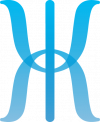Jeffrey Bergfalk
UNAM, Mexico
http://www.matmor.unam.mx/es/node/226
Date(s) : 30/09/2019 iCal
14 h 00 min - 15 h 00 min
The history of algebraic topology might be roughly summarized as the development of finer and finer invariants for distinguishing between topological spaces. It is all the more striking, then, that two of the most canonical such invariants — the homology and cohomology groups of a space — are so typically approached as discrete objects, i.e., as groups bearing only a trivial or essentially irrelevant topology. This is surprising because the topology of a space often naturally induces a topology on each of the chain and cochain groups from which the homology and cohomology groups of that space, respectively, are computed. By neglecting the extra information about spaces that these topologies represent, algebraic topologists forego a conspicuous opportunity to refine two of their most prominent classes of invariants, and this forebearance is in utter contrast with the larger impulse of their field.
Of course, there are mathematical and historical reasons for this neglect, and ours is a talk essentially about them. In other words, we will discuss the challenges to making good use of the above-mentioned group topologies — but we will also discuss ways of overcoming these challenges, and some of the rewards to be reaped when one does. Our tools for doing so are drawn from descriptive set theory, but we will presume of our audience no particular knowledge of this field or of algebraic topology; in short, the speaker intends a general mathematical audience talk on his recent joint work with Martino Lupini and Aristotelis Panagiotopoulos on all of these topics.
Catégories

